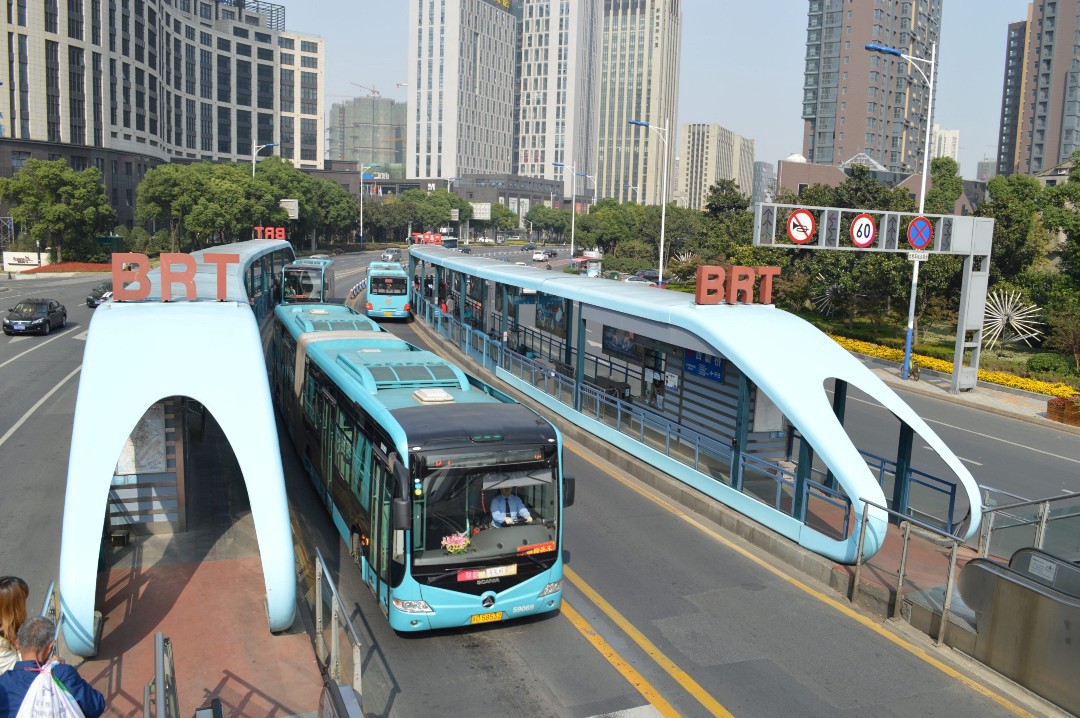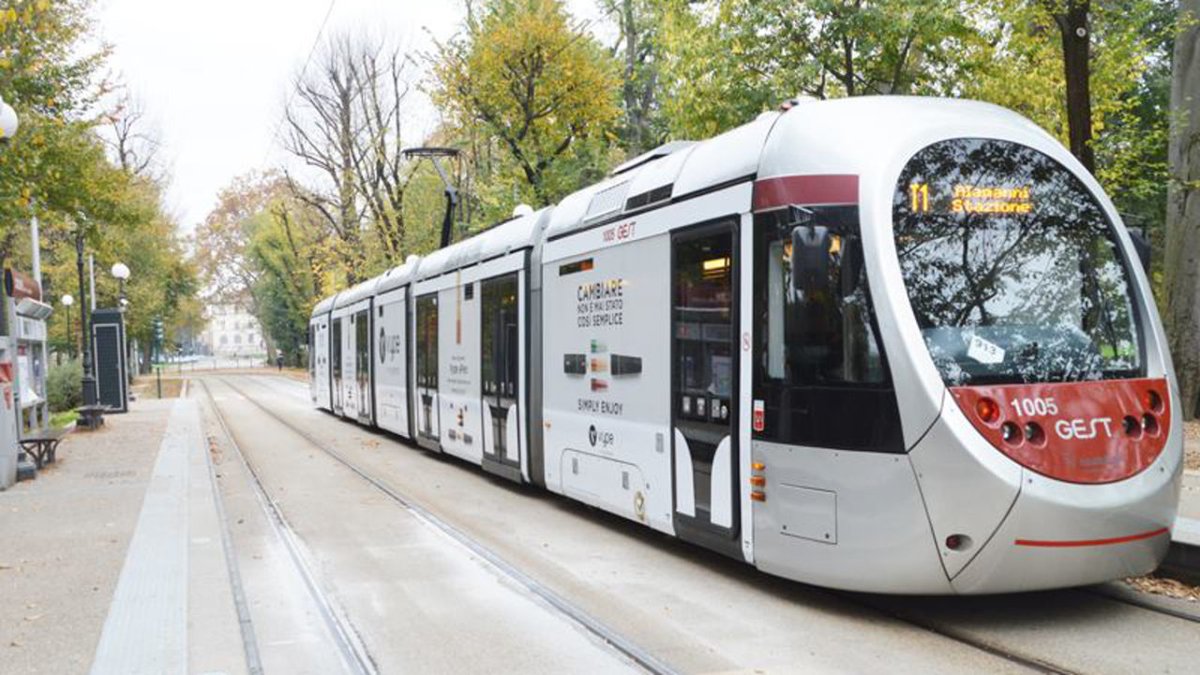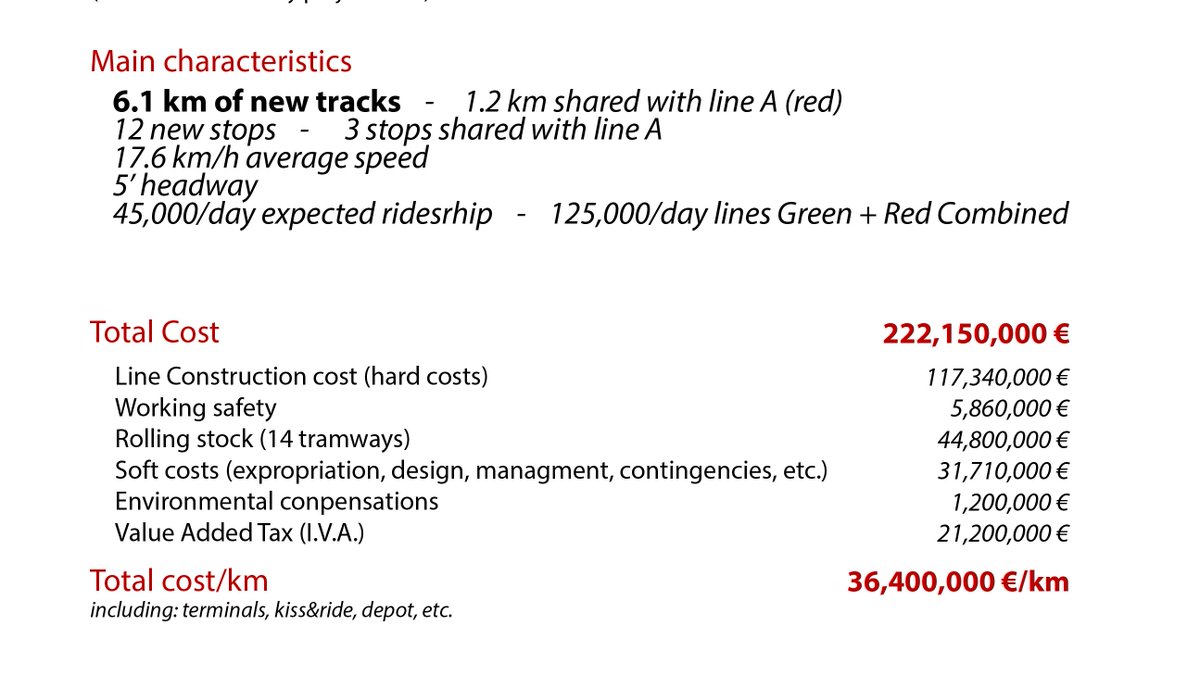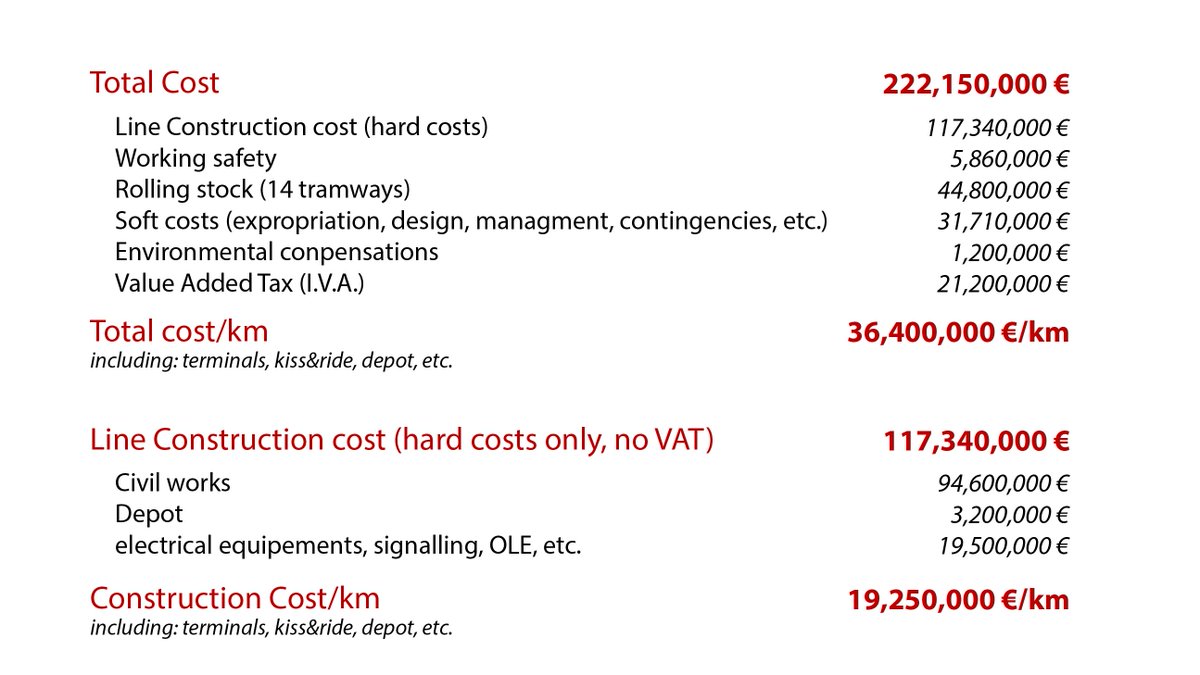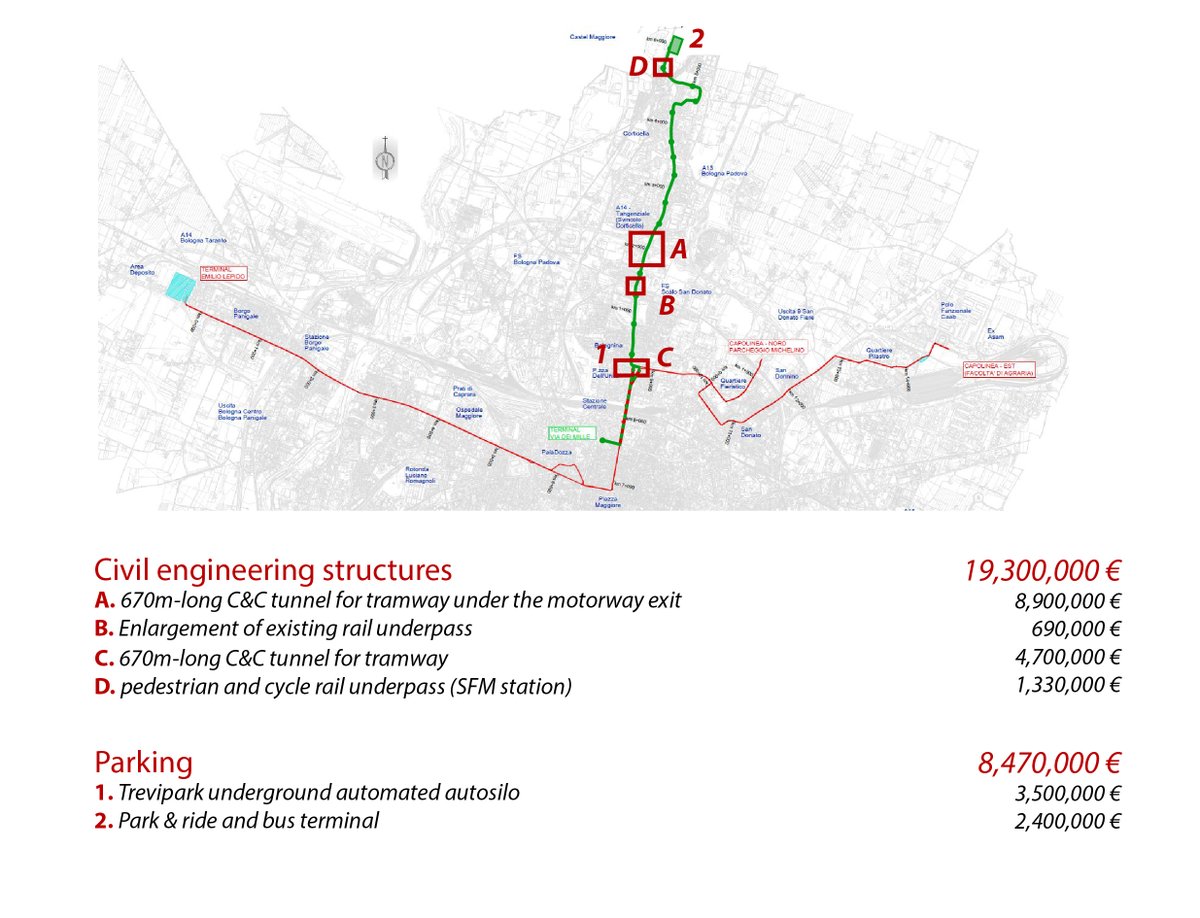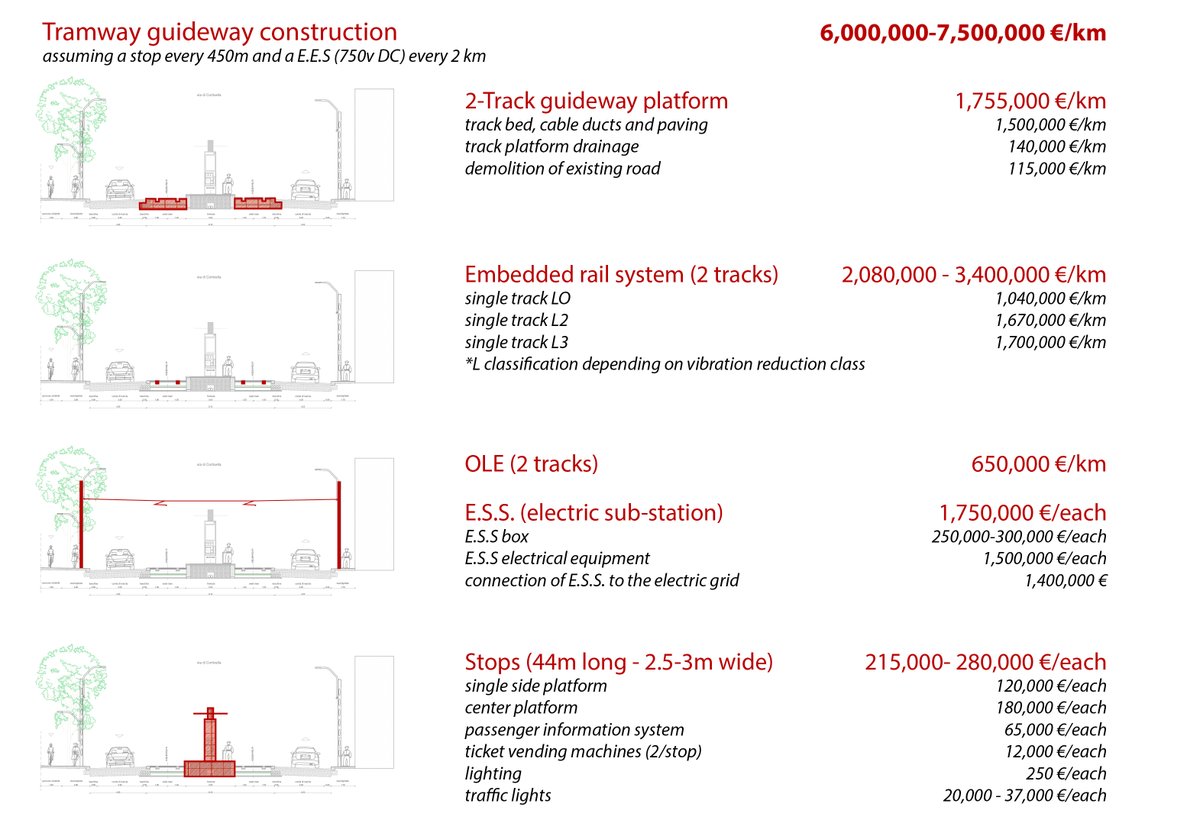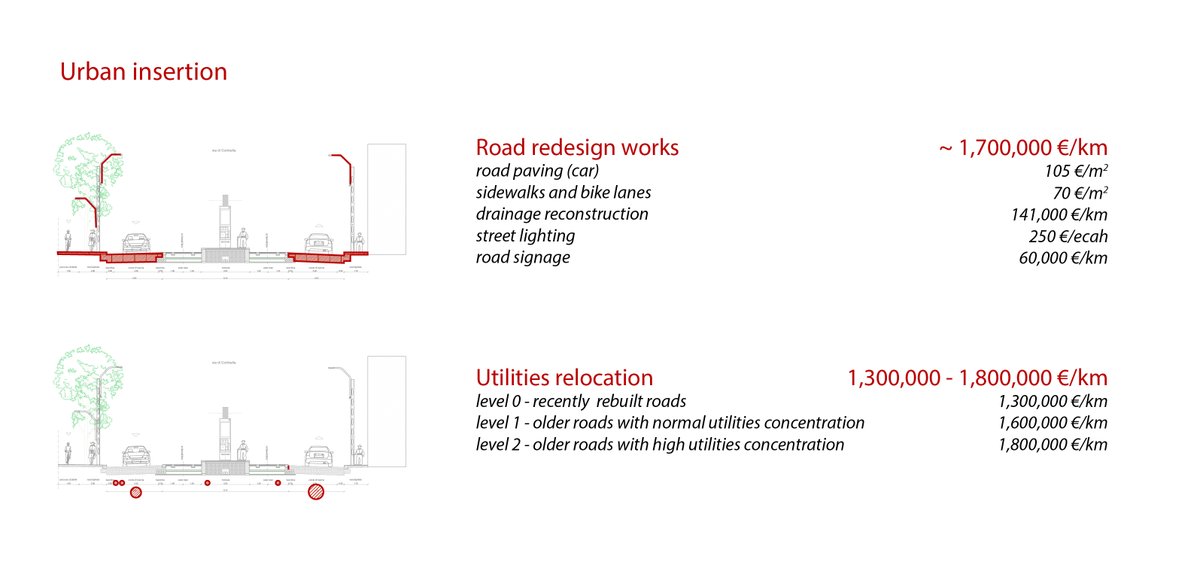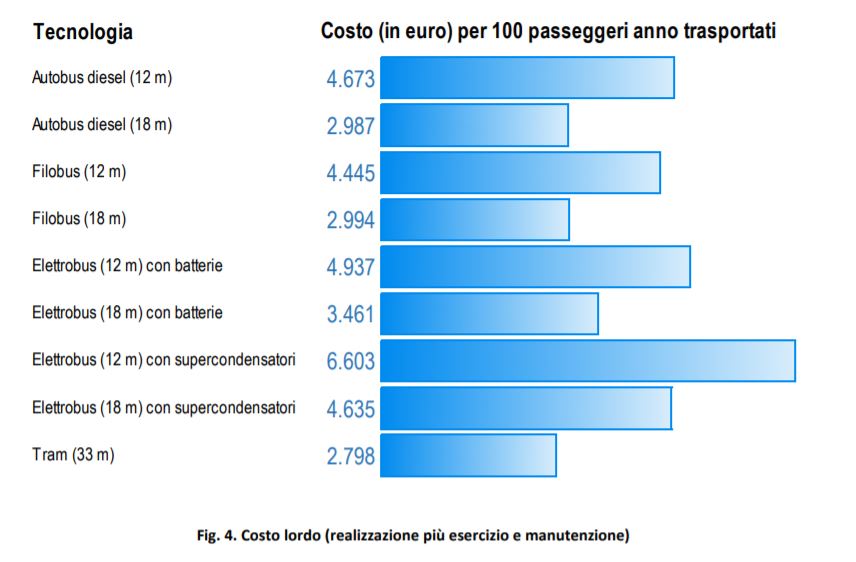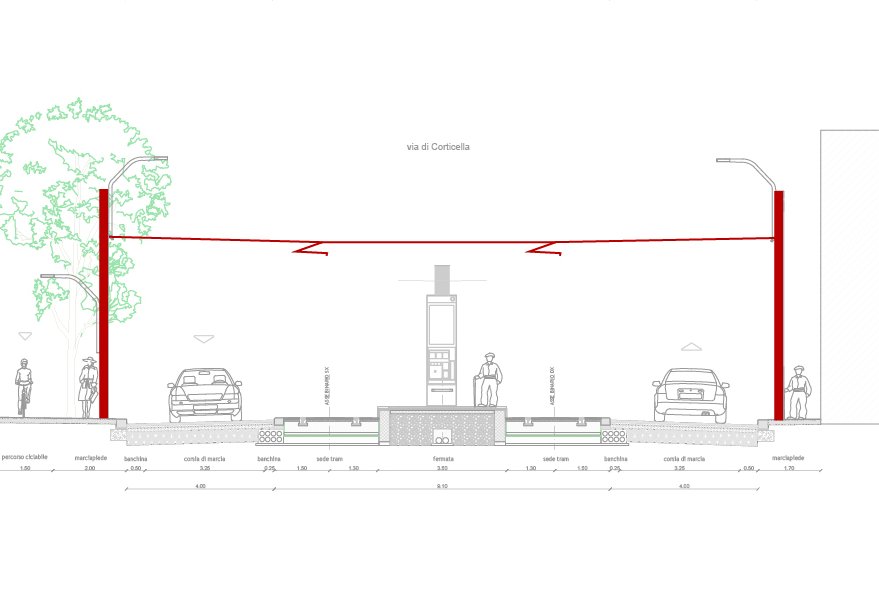1/ The debate between BRT (rubber based transit) and LRT/Tramway (rail-based transit) is often split around ideological lines. But the reality is that the choice is not so neat and it depends on a number of factors.
An example from the planned green line of Bologna's tramway.
An example from the planned green line of Bologna's tramway.
2/ It's a short line, in reality a semi-line, the first section of a longer second line.
It is an interesting case because it replaces completely on almost the same corridor an existing frequent bus line (27) that has a 3'-4' headway at peak and 5'-6' during the day
It is an interesting case because it replaces completely on almost the same corridor an existing frequent bus line (27) that has a 3'-4' headway at peak and 5'-6' during the day
3/The average speed of the proposed tramway line is 17.6km/h. Checking the current timetables of line 27, the average speed is almost the same of the current line. That because stop spacing is similar (350-400m), and there are already bus-only lanes on part of the route
4/ That is also because Modern-European-Tramways have a much less flexible centrally planned operation, as the driver follows exactly the same sequence of speeding up-cruise speed-braking. Bus drivers have a more flexible (but also more dangerous) driving style.
5/ The real difference is reliability: With most of the RoW being reserved, traffic priority and a few grade separated intersection, the tramway has more chances to stick to the timetable regardless of traffic conditions compared to a standard bus with some reserved lanes
6/ But that could be achieved with a full BRT too, right? Because we should not mix the level of segregation of the RoW with the type of wheel (rubber or iron).
The main argument in favor of BRT is that it is cheaper in terms of capital costs. But how much cheaper?
The main argument in favor of BRT is that it is cheaper in terms of capital costs. But how much cheaper?
8/ But beware, because those costs are not just related to the tramway platform, but includes a number of major grade separation, a depot, and, unfortunately, new public parking to appease the crowd of "we-lost-the-parking-place-in-front-of-our-house/shop-we-are-entitled-of"
9/ If we want just to understand what is the premium of a rail RoW over a BRT we must look at the elements that are just related to the electrification and tracks. Excluding the guideway (needed also for the BRT too) we have tracks (2-3.4m€/km) and OLE+ESS (1.4-1.8m€/km)
10/ All the other elements needed to run the system (stops, traffic priority system, SCADA, signaling, etc.) or being part of the overall road redesign (utilities relocation, road repaving, greeneries) would be necessary also for a full BRT option
11/ So the premium of a tramway (MET-style) over a BRT is roughly around 4.5m€/km at most, less if "cheaper" embedded rail systems are used in case of lower need for vibration reduction. In case of a TRT (Trolleybus Rapid Transit) the premium is 1.5m€ lower, since OLE is needed
12/ Of course, the upfront cost of vehicles is higher for tramways, even relative to capacity: a
- 18m bus cost 5-600k € (120-140 places),
- 18m trolleybus 800k-1m€ (120-140 places)
- 33m tramway 2.5-3m€ (240 places).
- 18m bus cost 5-600k € (120-140 places),
- 18m trolleybus 800k-1m€ (120-140 places)
- 33m tramway 2.5-3m€ (240 places).
13/ But the operating cost par offered seat (including maintenance of the vehicle and of the infrastructures) is lower for tramways compared to all the other options: 18m diesel or electric bus and even compared to trolleybus, because of reduced manpower by a factor of 0.85
14/ At similar offered capacity, the overall gross cost/passenger, is slightly favorable to tramways, but only in corridors with a peak demand of more than 2,500 pphpd and global demand of more than 30-40,000 passenger day on a 15km line
15/ But economic considerations are not the only ones. Bologna is finally going toward the tramway because of severe capacity constraints on the central section, where several trunk lines superposed have 45'' combined frequencies, with very perturbated traffic during rush hours
16/ More than flexibility, the system here needs capacity and reliability. A BRT operated with 18m (or even 24m bi-articulated) would still need 1'-2' minutes frequencies on shared trunks, with no space for the necessary overtakes or 50m-long platforms for contemporary boarding
17/ The tramway is also better in space-constrained places: with the suspended OLE system retained in Bologna, the guideway could be reduced to 6.5m only compared to at least 8m for a bus/trolleybus, or even more on turns.
18/ There are not only advantages: late evening or night trips will be slower on the tramway, as it will keep the same programmed speed, compared to a bus driver speeding up beyond 50km/h (they do, we know) and skipping stops along empty streets.
19/ In any case, it is for sure a bad idea to replace a frequent bus route with an infrequent light rail or tramway just based on operating cost or prejudices about the "superiority" of a rail-based system.
20/ Peak headway in Bologna will only be reduced from 3'-4' to 5' (but possibly 4') which is a minor loss largely compensated by reliability, slightly higher frequencies during the day (from 6' to 5'), and a much better overall confort of the trip (plus savings for the operator)
21/ Overall, the factors that should drive the decision between an improved bus frequent transit and "moving to the rail" are disparate and should be carefully considered to understand when it's worth and when it's not.
22/ Even more importantly, it's not only about the wheel (rubber on asphalt or steel on steel) or the propulsion system, but also about the geometry of the network, the urban context, the tradeoff between frequency and capacity etc.

 Read on Twitter
Read on Twitter